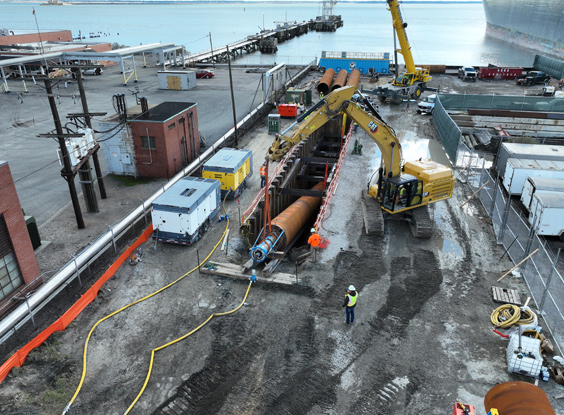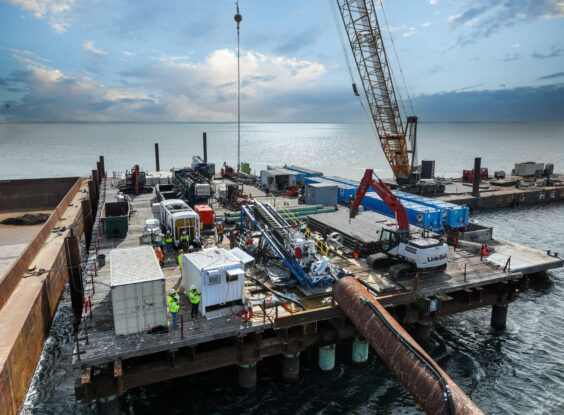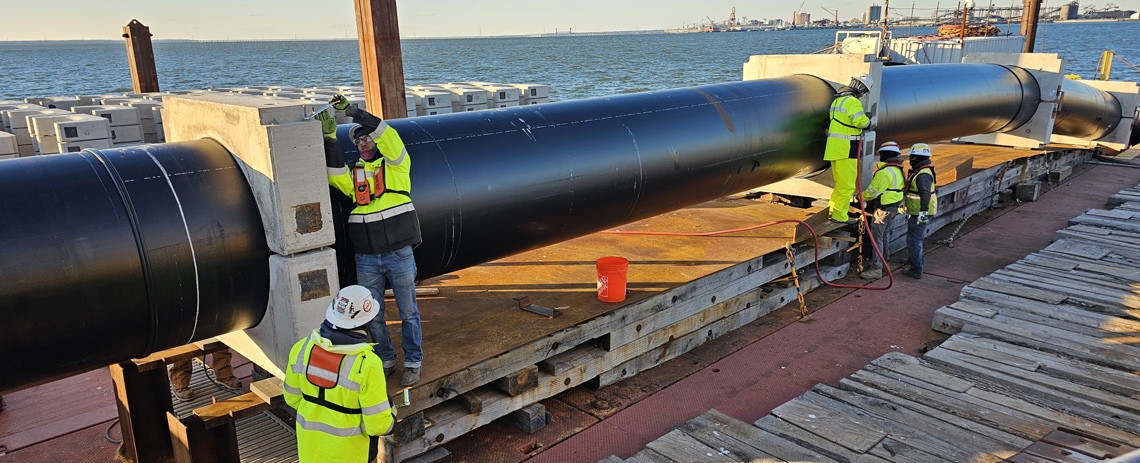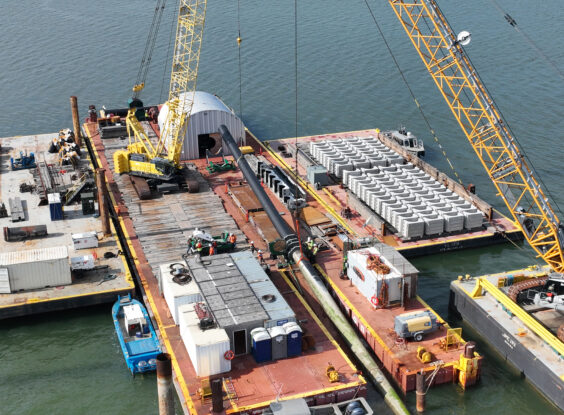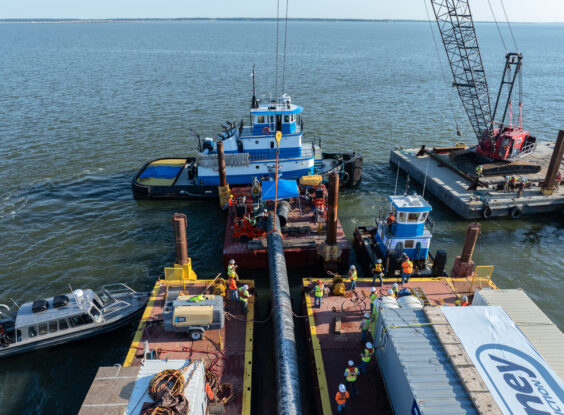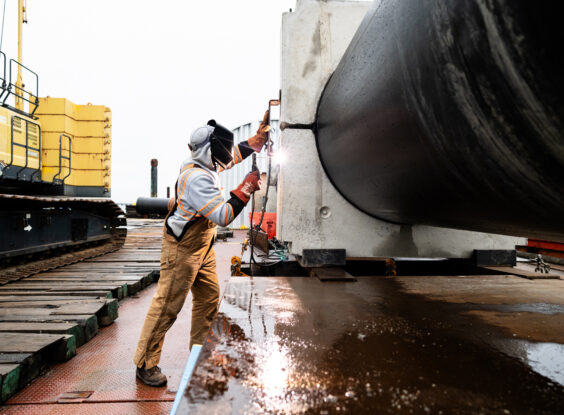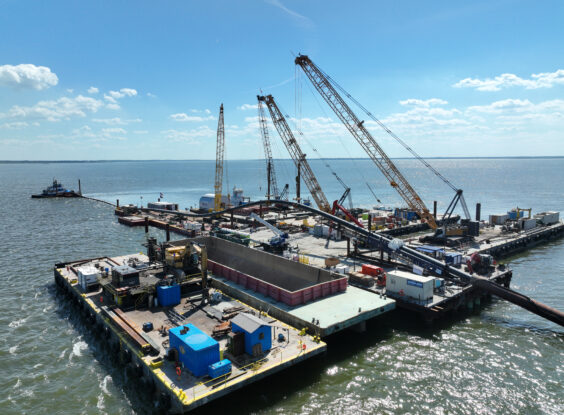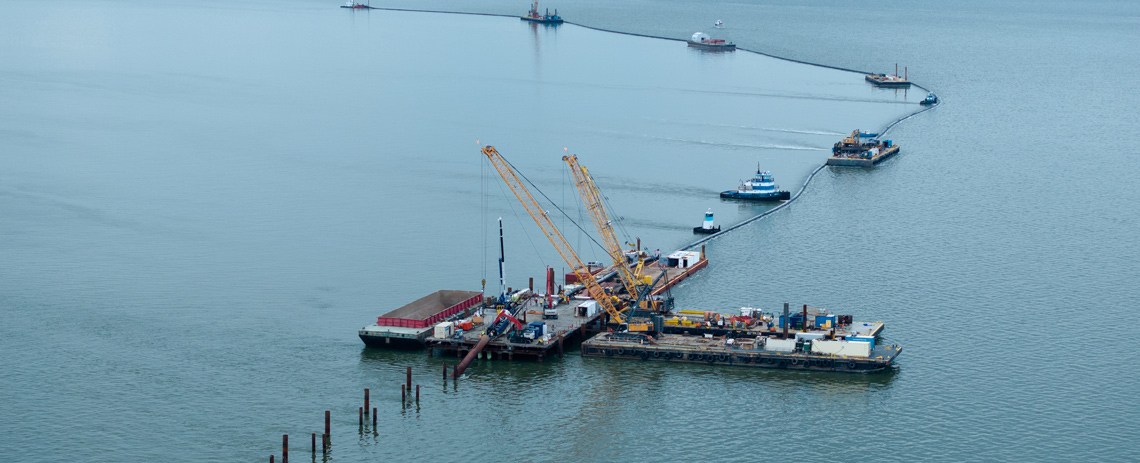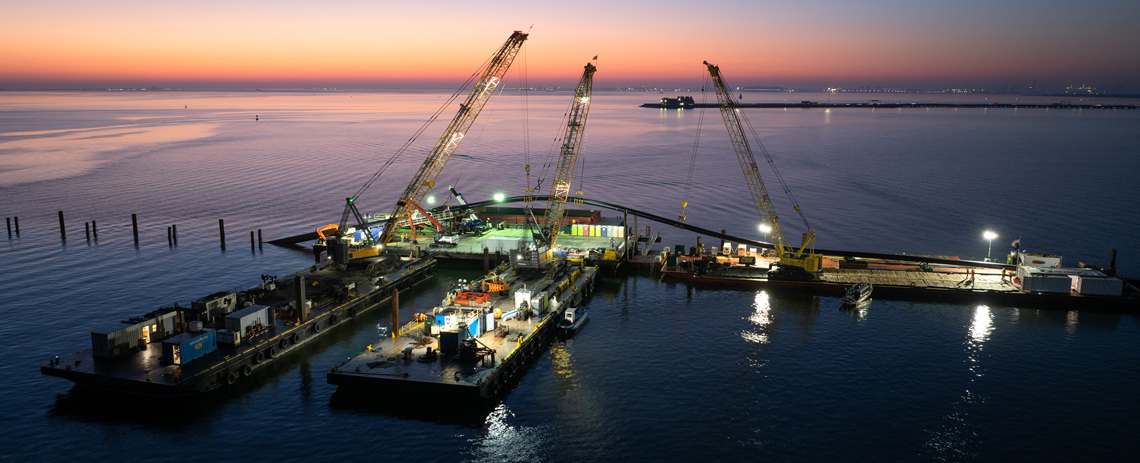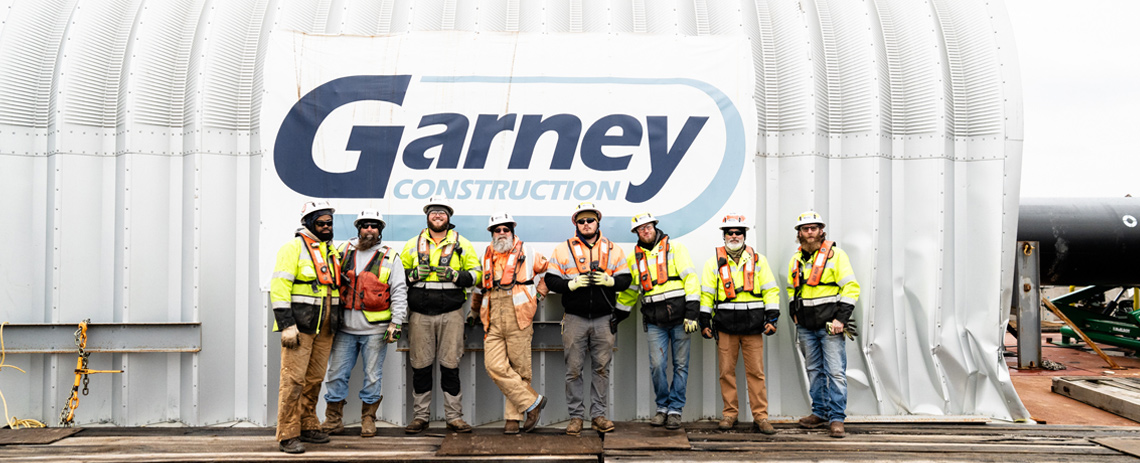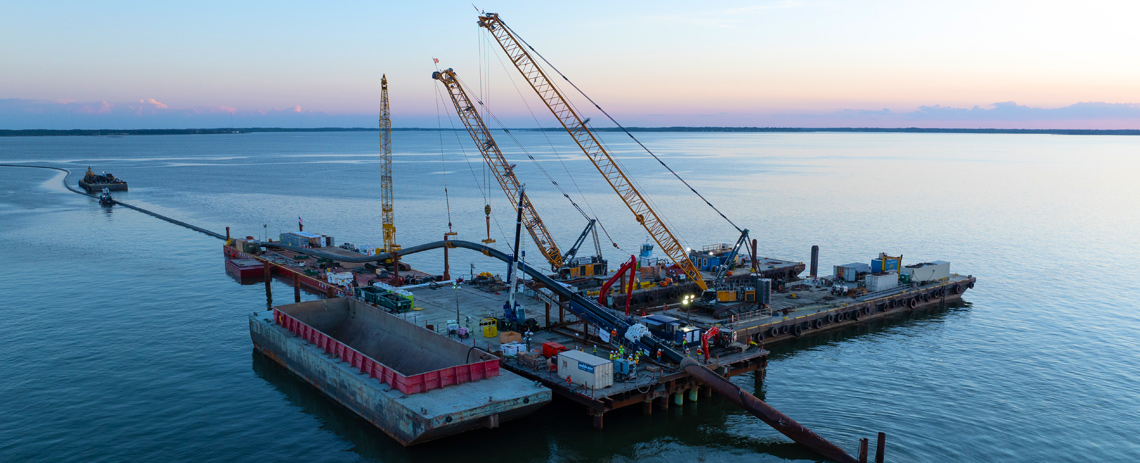James River Crossing (JRX)
Location
Newport News, VAValue
$144MDelivery Method
- Design-Build
Client Type
MunicipalProject Type
- Pipeline
- Marine
The Hampton Roads Sanitation District (HRSD) launched the Sustainable Water Initiative for Tomorrow (SWIFT) to advance long-term water sustainability in Eastern Virginia. The program aims to recharge the Potomac Aquifer and improve water quality in the Chesapeake Bay. A key component of this effort is the Boat Harbor Treatment Plant Transmission Force Main Section 1 – Subaqueous Portion, known as the James River Crossing (JRX) project. This pipeline conveys treated water from the new Boat House Pump Station to the Nansemond Treatment Plant for further purification, enabling HRSD to recharge the aquifer with up to 120 million gallons per day (MGD) of SWIFT Water.
Using horizontal directional drilling (HDD), the JRX team installed more than 5,700 feet of 42-inch high-density polyethylene (HDPE) force main beneath the Newport News Shipping Channel—one of the busiest ports in the U.S.—reaching depths more than 100 feet below the riverbed. In just 24 hours, the crew completed the world’s longest-known pullback of 42-inch HDPE pipe.
Garney, engineer Dewberry, and other project partners collaborated with HRSD early to refine the scope, improve constructability, and streamline permitting. The team extended the HDD alignment to the shoreline — adding 2,300 feet to the drill length — to eliminate the need for marine trenching, resulting in more than $10 million in cost savings.
Project Status
Marine crews completed the subaqueous portion of the force main in July 2025. Pipe crews are now installing the landside portion, which includes 6,650 LF of 48” HDPE sanitary force main, 2,850 LF of 30” SWIFT-finished water main, 3,650 LF of 16” PVC backflush main, and 1,200 LF of 12” SWIFT-finished water main. The work also requires 2,600 LF of electrical duct bank, 4,700 LF of fiber line conduit, and a 400 LF 99” micro tunnel beneath I-664 lined with permalock casing. This segment connects to the Nansemond Water Treatment Plant, where Garney’s plant division is expanding capacity and improving nutrient reduction. The team is also building the new SWIFT Facility, an advanced treatment plant with recharge wells to replenish the local aquifer.
